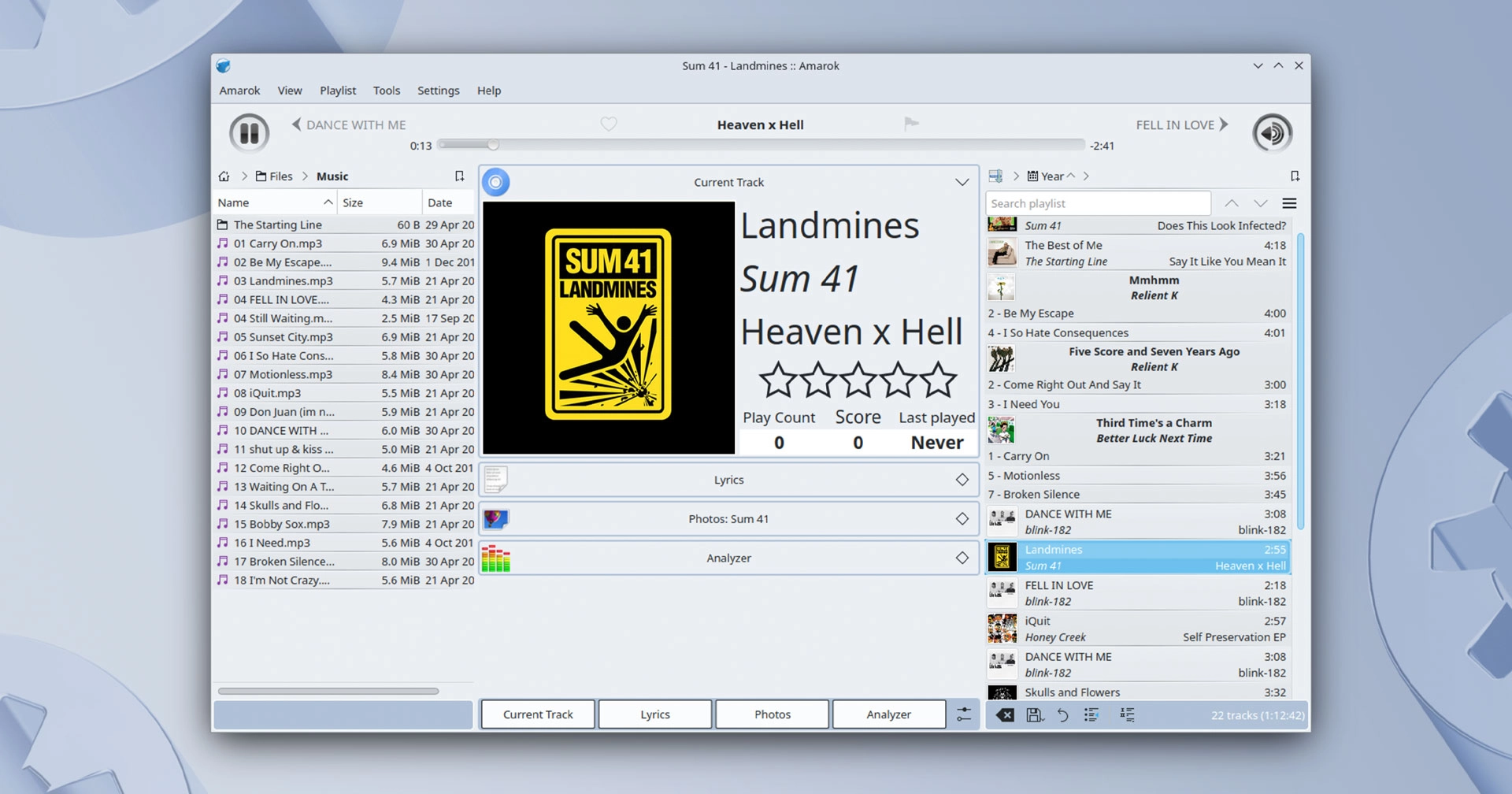A new version of the open-source music player Amarok has been released, the first major update to the Qt-based media app since 2018.
Amarok 3.0 is the first stable release to use Qt 5 and KDE Frameworks 5, and work to port the music player to the newest Qt 6 and KDE Frameworks 6 is, its devs say, soon to get underway.
“Common usecases should work quite well, and in addition to fixing KF5 port related regressions reported in pre-releases, 3.0 features many bugfixes and implemented features for longstanding issues, the oldest such documented being from 2009,” devs say.
“However, with more than 20 years of development history, it is likely that not every feature Amarok has been tested thoroughly in the new release, and specifically some Internet services that have changed their API in recent years are not available, at least for now.”
Amarok 3.0 operates efficiently on KDE Plasma 6.0, making it an excellent choice for Kubuntu 24.04 LTS users, as it still uses the KDE Plasma 5.27 LTS series. Similar to Amarok 3.0, the KDE Plasma 5.27 LTS series is based on Qt 5 and KDE 5 Frameworks.
There are several new additions, corrections, and noteworthy adjustments:
- An indication that context view applets can be resized while in editing mode
- A menu option to collapse all the expanded items in the collection view
- The presentation of song progress on OSD
- The added ability to copy track specifics from the track context applet
- The functionality of rearranging queue editor via drag and drop
- Non-operational play control selection is no longer shown in dynamic mode
- Preferable usage of symbolic systray icons to enhance integration with KDE Plasma 6
- Error reports of missing metadata displayed through Wikipedia applet
- A button that prevents automatic Wikipedia page updates
- Replacement of obsolete lyricwiki with a new lyric provider
- Enhanced relevance of Flickr photos in the photos context view applet
Does associating Wikipedia in a music application seem odd to you? While it appears peculiar now, in the past era when local media players were paramount, having web integration elements within your music player was rather standard.
In certain respects, Amarok started the trend and reaffirmed its commitment to contextual supplements through its contentious 2.0 release, leading to forks such as Clementine (later forked into Strawberry), created based on the earlier Amarok 1.4 UI.
Download Amarok 3.0
Amarok doesn’t have a Flathub or Snap Store listing, yet it’s reasonable considering it has only just reappeared in the release-land with its first stable version in six years. Nonetheless, it would be fantastic to see this new version more widely available.
For now, you can download Amarok 3.0’s source code from the KDE website.
